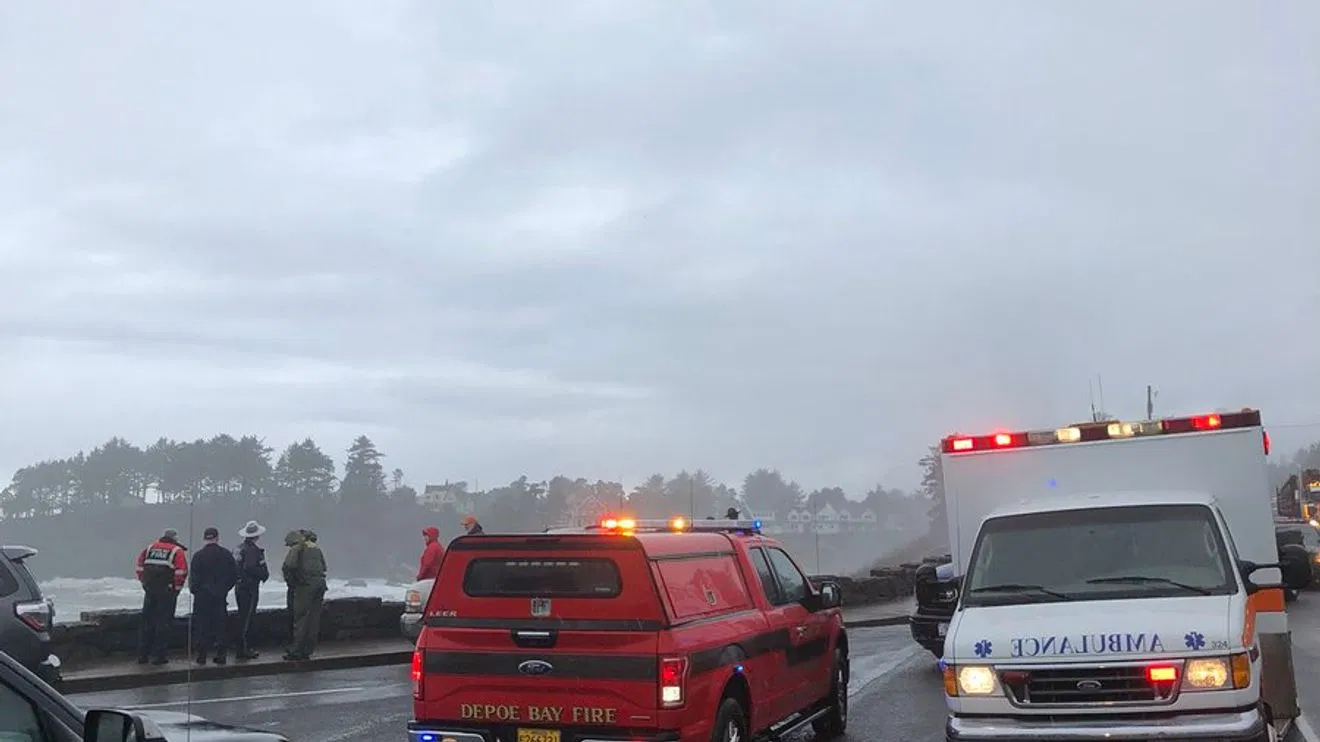Information provided by Confederated Tribes of Siletz Indians
 On Friday May 6, 2016, work was being done under a home near the turnaround in the Taft area of Lincoln City, Ore., when human remains were found. Some missteps were initially made in following state law and the State/Tribal Cultural Resources Cluster Position Paper on Treatment of Inadvertent Discoveries of Human Remains (available at Oregon State Historic Preservation Office).
On Friday May 6, 2016, work was being done under a home near the turnaround in the Taft area of Lincoln City, Ore., when human remains were found. Some missteps were initially made in following state law and the State/Tribal Cultural Resources Cluster Position Paper on Treatment of Inadvertent Discoveries of Human Remains (available at Oregon State Historic Preservation Office).
The Siletz Tribal Cultural Resources director / Native American Graves Protection and Repatriation Act (NAGPRA) representative, Robert Kentta, should have been contacted right away by the OSP State Agency key contact on such matters. The position paper stresses that Tribal contacts should be made early in the process to help law enforcement determine whether the remains are associated with an ancestral burial or pioneer grave vs. a modern crime scene.
Local OSP and Lincoln City Police did the best they could, in the absence of Tribal assistance, by consulting with the State Medical Examiner’s Office in Clackamas, Ore. The Siletz Tribal rep was not contacted until much later, initially by Editor Rick Mark from The News Guard rather than through official channels. By then, the contact with the State Medical Examiner’s Office had provided assurance that the remains were associated with a Native burial and were not part of a crime scene.
Oregon’s Cultural Resource and Native Burial Laws apply to state and private lands in Oregon; federal laws such as the Native American Graves Protection and Repatriation Act (NAGPRA), National Historic Preservation Act (NHPA) and Archaeological Resources Protection Act (ARPA) apply to federal lands and project locations that are using federal funds, federal permits, etc.
Oregon’s laws are strong in protecting history for all Oregonians. No one can remove an artifact from the ground if a tool or equipment had to uncover it (without a permit from SHPO – which includes property owner consent). One cannot knowingly alter, deface or destroy a Native burial, cairn, archaeological site, etc., without similar clearances. Discovery of burials raises significant special concerns that must be addressed. Provisions to handle the discovered remains must be taken, which may include protection in place, relocation with approval and supervision of the Tribe, or other options.
Once an inadvertent discovery is made, such as occurred on May 6, standard processes are supposed to kick in. All ground-disturbing activity is to halt – nothing is to be further removed or disturbed – until the proper contacts have been made and clearances have been given.
State law says that the OSP key contact (Trooper Chris Allori), SHPO (either Dennis Griffin or John Pouley, both state archaeologists) and the Legislative Commission on Indian Services (Karen Quigley, executive director) all should be contacted immediately, and contact then should be made with the appropriate Oregon Tribe or Tribes. That determination is made by the LCIS executive director based on historical connections and Tribal expressions of areas of interest. Once all are informed and have the opportunity to respond, then decisions can be made.
As stated earlier, the first business is to determine whether a crime needs to be investigated and Tribal reps generally can assist in quickly reaching that determination. Once determined to be a Native burial, then Tribes have the role of determining some of the next steps – Is the area a known village site and/or cemetery? If so, planning departments for county/city government should be informed so future proposed construction projects can be proactive in design/layout and utilities planning.
If additional ground disturbance work is needed/planned, then a determination is made as to if, how and when that can happen. This might include a planned approach as laid out in a work plan attached to a SHPO permit. Permit applications generally take 30 days of review time so all parties can respond. In these situations, however, an Expedited Permit Application can be sent out, in which reviewers are given 48 hours to respond.
Tribal reps are generally reasonable, experienced/seasoned staff who have seen lots of similar situations, know how to operate within the law and can work with land owners to make decisions that do not leave them hanging with uncertainty or unnecessary construction delays. Sometimes construction can resume as planned, sometimes it is determined that ground disturbance does not need to go as deep and the sensitive area can be avoided. Sometimes plans need to shift more significantly. It all depends upon the situation and what can or cannot be avoided.
These situations are always upsetting to all involved on some level – someone’s or a whole crew’s work schedule is altered, a company’s project schedule is in question, a home owner has multiple issues to consider, and the state agencies and local law enforcement have their own perspectives.
Tribal folks do not automatically operate from a place of anger or resentment even in these situations, though these circumstances do bring up a remembrance of historical wrongs. The history of a place is not necessarily known or respected by modern residents or visitors of areas that once were exclusively ours, promised by treaty agreements to be always ours.
These remains are likely those of someone forced to leave their homelands and come to this reservation in the 1850s, only to die 20 or so years later, then be buried in a place that has seen many changes since the early 1900s. The remains of their relatives and friends also likely lie nearby, if not intact, then strewn about by earlier construction activities.
